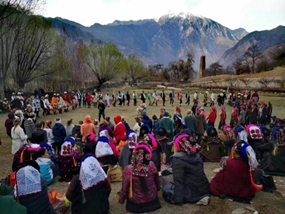
January 7, 2021, by aczjb1
Social innovation for community development and environmental protection in natural reserve parks of China
Dr Bin Wu has published a new case study on the natural reserve parks of China. The report, authored alongside Xiaomei Liu, looks at social innovation for community development and environmental protection at the Yunhe Centre in Ganzi.
Accounting for nearly 15% of its national territory area, China’s 2,750 nature reserve parks (NRPs) play a vital role in protecting its biodiversity and natural resources. Most NRPs are occupied by rural poor populations and are also home to ethnic minority nationalities. This poses a dilemma for the Chinese government and development professionals as the participation of local farmers in environmental protection may be constrained by their traditional production methods that are based upon the intensive use of local natural resources. Furthermore, the narrow approach and policy of ecological compensation may not be enough to attract and change their behaviours given the nature of the complexity of local ecological, economic and social environments. To cope with this challenge, more than 20 non-government agencies across China have been involved in rural communities in NRPs since 2015, to explore new pathways for sustainable rural development and environmental protection.
The case of Dragon Yunhe Centre, a social enterprise located in Ganzi Tibetan Prefecture of Sichuan Province, offers insight regarding the emergence and contribution of social innovation in farmer participation and community development in NRPs of Western China.
The story of Yunhe Centre can be tracked back to 1999 when the Murdo Mountain Area was officially defined as an NRP by the Provincial Government. This meant that the rural people living in Zhonglu Township of Danba County had to change their production mode and lifestyle and find new sources of livelihood security. Having recognised the potential of local tour resources for farmers’ income growth, local government had tried to attract external capital to boost the local tourism industry but found poor collaboration between tourism companies and local farmers.
Read the full report here: Social innovation in natural reserve parks.pdf
No comments yet, fill out a comment to be the first

Leave a Reply